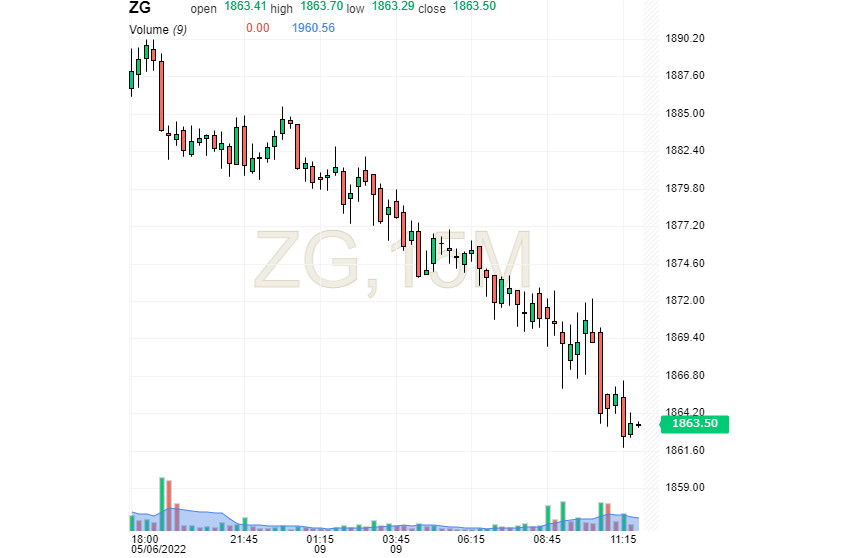

For a long time, the increase in Federal Reserve rates had a negative impact on the dynamics of the yellow metal. The tightening of the monetary policy by the US central bank provoked a collapse in gold. However, this trend may now change, analysts warn.
The Fed raising interest rates has always hampered gold's growth. The tightening of the Fed's monetary policy served as a kind of anchor for gold, slowing down its dynamics. However, now there has been a change in the current trend. Currently, experts are recording a new trend that can initiate the strengthening of the precious metal along with the rise in rates.
Rising interest rates in the US are suppressing the growth of commodity markets, increasing the costs of dealing with precious metals. At the same time, an increase in the key rate contributes to the appreciation of the greenback in relation to other assets. The US currency still holds the reins in the global financial market, remaining the main means of payment. Recall that many commodities are denominated in USD. The rising dollar is putting serious pressure on the hydrocarbon markets, which are sinking against the background of the latter's growth.
For several weeks, the lion's share of commodities has left their multi-year highs. Recall that recently gold was traded at $2072 per ounce, and then fell in price to $1897 per ounce. At the beginning of the current month, $1883 was given for the yellow metal. The decrease in gold occurred against the backdrop of a rise in interest rates by the Fed. This measure contributed to the growth of the yield of US Treasury bonds and the dollar reaching a 20-year high. Gold sank to $1,863.50 per ounce on Monday, May 9, although its potential is still high.

The tightening of the monetary policy by the central bank took place against the backdrop of galloping inflation and a 1.4% slowdown in economic growth. According to analysts, in the near future, the rise in rates will slow down, and the precious metal's rally will resume. Note that the latter fell slightly, despite the Fed's rate hike. This was facilitated by fears about the consequences of the Russian-Ukrainian crisis and severe quarantine restrictions in China against the backdrop of a new outbreak of COVID-19.
Many experts pay attention to the non-standard of the current economic situation. This state of affairs forces us to revise the old rules in the financial markets. Previously, the growth of interest rates and the dollar played against commodity markets, but now the situation has changed. Currency strategists are confident that this year interest rates and the dynamics of key currencies will fade into the background. "First violin" in this situation will be played by geopolitics.
Currently, the cost of precious metals is affected by the Russian-Ukrainian conflict and tough anti-Russian sanctions. This provokes a serious imbalance in the global supply chains. An additional factor of pressure is the potential partnership between China and Russia. Of no small importance is the ideological component, against which the US and China find themselves on opposite sides of the barricades. Experts believe that tensions between the two largest economies are contributing to the financial conflict.
The catalyst for the rally in commodity markets was the overshooting inflation in a number of countries, primarily in the United States. This forced the Fed to seriously address this issue, but many experts believe that the central bank was late in tightening monetary policy. As a result, the American economy found itself caught between inflation, which broke a growth record over the past 40 years, and a slowdown in economic processes in the country.
The Russian-Ukrainian conflict has changed the fundamental balance of supply and demand in many markets. First of all, precious metals, in particular gold, suffered from this. According to analysts, the so-called "ideological war" has outweighed the significance of the Fed's key rate. For the global economy, the geopolitical factor turned out to be more important than the financial one.
Against this background, the market of precious metals sank significantly. The strengthening of the US currency added fuel to the fire. However, many experts note the growing potential of gold and expect it to strengthen in the medium term. Currency strategists at ANZ Bank predict that the yellow metal will hit $1,900 over the next six months.

QUICK LINKS